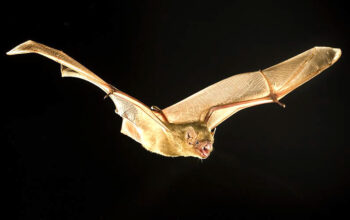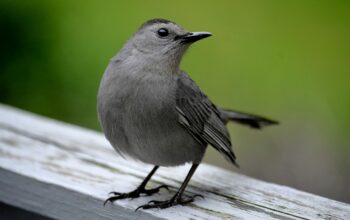The Great Horned Owl is large predatory bird, approximately 25″ tall with a four and a half foot wingspan. These owls range from Alaska and Northern Canada eastward and southward throughout the Americas. Colors vary with their habitat, from nearly white in the arctic, to dark brown and gray, mottled and streaked below, setting off a white throat. The widely spaced tufts at the ears give the great horned owl its name. Its call is a distinctive ho-ho-hoo=hoo=hoo, varying between four and five syllables. The female’s call is slightly higher in pitch. The Great Horned is very adaptable in terms of habitat, and they live in deciduous, coniferous and mixed forests, as well as rainforests, prairie, deserts, swamps and urban areas. They tend to prefer areas with less human activity, but may be found in park-like areas in developed areas. Mated owls tend to keep permanent territories, and they generally mate for life. The crushing force of the talons is approximately 300 pounds per square inch, greater than that capable of the human hand. In this regard, the Great Horned Owl is comparable to the much larger Golden Eagle in some cases. Owls have binocular vision which allows them to spot prey very precisely in low light. Their eyes are as large as a human’s, but they are immobile in their circular bone sockets. To compensate, the owl can turn its head a full 270 degrees in order to see in different directions without turning its body.
The Great Horned Owl’s ears are not located in the same position on both sides of the head. The right ear is typically higher and at a slightly different angle. By positioning the head until a sound is the same in both ears, both the horizontal and vertical direction of the sound source may be pinpointed. They eat other birds and small/medium sized animals.



